Portfolio Architecture Examples: Retail Collection
In this latest post about the Red Hat Portfolio Architectures, learn more about the featured collection of retail architectures.
Join the DZone community and get the full member experience.
Join For FreeThis article is a continuation of a series of posts about our project named Portfolio Architectures. The previous post, Portfolio Architecture Examples: Healthcare Collection, begins with a project overview, introduction, and examples of tooling and workshops available for the project. You may want to refer back to that post to gain insight into the background of Portfolio Architectures before reading further.
Retail Collection
The collection featured today is centered around architectures in the retail industry. There are currently seven architectures in this collection. We'll provide a short overview of each, leaving the in-depth exploration as an exercise for the reader.
In each of these architecture overviews, you'll find a table of contents outlining the technologies used, several example schematic diagrams with descriptions, and a link in the last section to open the diagrams directly into the online tooling in your browser.
Business Optimization
Retail is the process of selling consumer goods or services to customers through multiple channels of distribution to earn a profit. Retailers satisfy the demand identified through a supply chain. The term "retailer" is typically applied when a service provider fills the small orders of many individuals who are end-users, rather than large orders of a small number of wholesale, corporate, or government clientele.
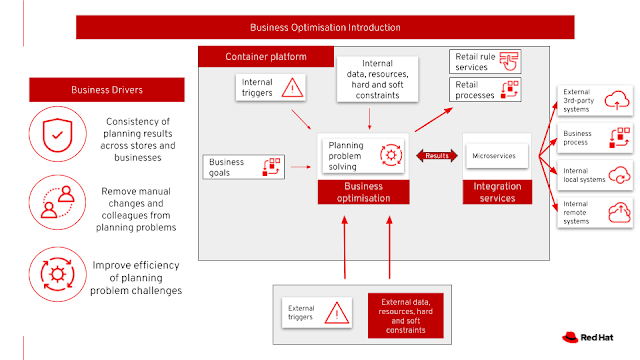
The use case is optimizing delivery routing, automating rostering of staff, and improving the efficiency of tasks across multiple stores.
Headless e-Commerce
The term electronic commerce (e-commerce) refers to a business model that allows companies and individuals to buy and sell goods and services over the internet.
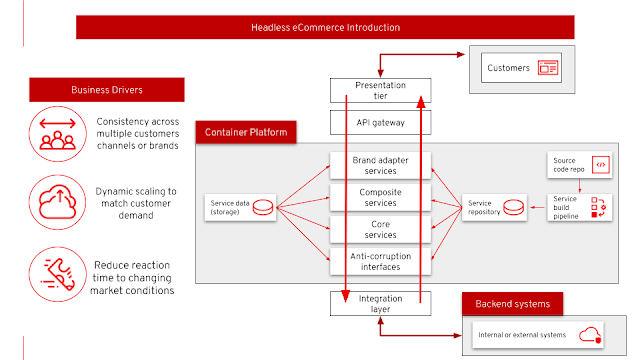
The use case is deploying a container-based e-commerce website while moving away from a tightly coupled existing e-commerce platform.
Point of Sale
A point of sale, or point of purchase, is where you ring up customers. When customers check out online, walk up to your counter, or pick out an item from your stand or booth, they're at the point of sale. Your point-of-sale system is the hardware and software that enables your business to make those sales.
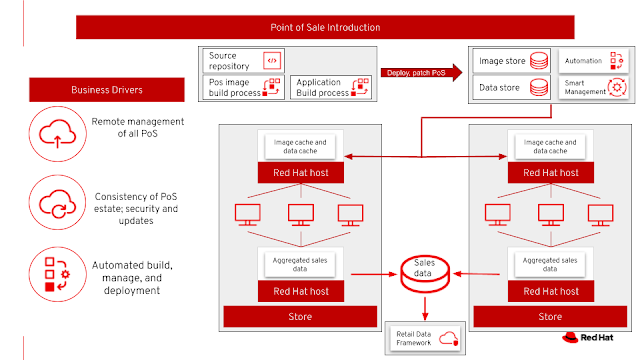
The use case is simplifying and modernizing central management of distributed point-of-sale devices with built-in support for container-based applications.
Real-Time Stock Control
Real-time inventory management is an automated process of recording sales and purchases through the use of software. It gives you a complete picture of what's happening with inventory, allowing your business to react quickly to supply chain needs.
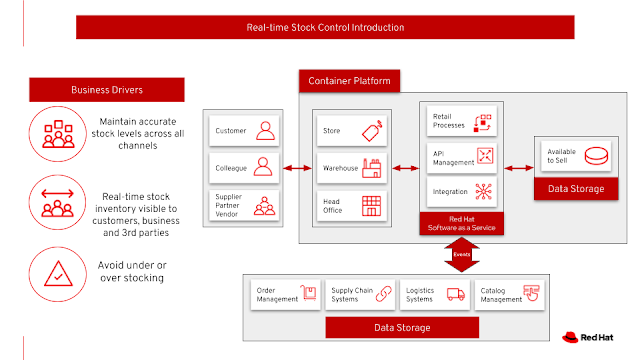
The use case is providing (near) real-time stock positions and dynamic pricing promotions information to retailer omnichannels.
Retail Data Framework
A data framework refers to the process of managing enterprise retail data. The framework or system sets the guidelines and rules of engagement for business and management activities, especially those that deal with or result in the creation and manipulation of data.
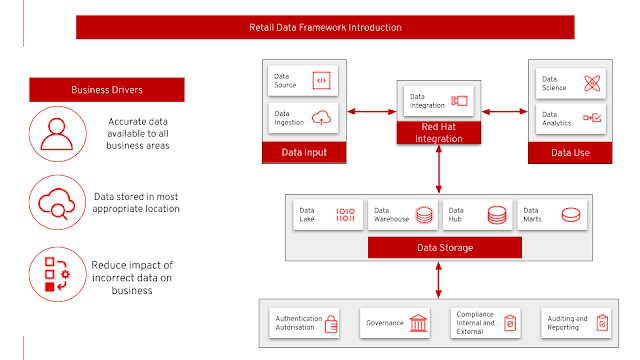
The use case is creating a framework for access to retail data from customers, stock, stores, and staff across multiple internal teams.
Store Health and Safety
Store health and safety are all about managing risks to protect workers and stores. In a global context, health and safety are also an essential part of the movement toward sustainable operational growth.
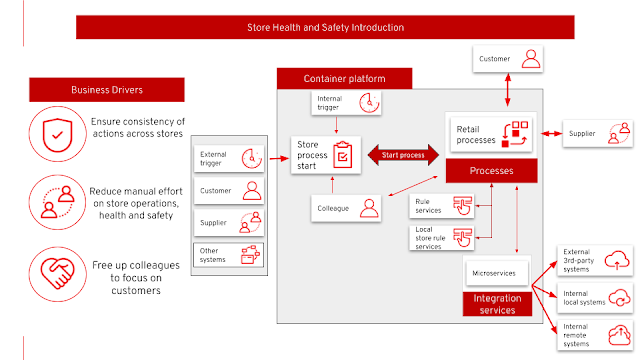
The use case is managing effective in-store compliance, health and safety, and employee checks and procedures.
Supply Chain Integration
Supply chain integration is a large-scale business strategy that brings as many links of the chain as possible into a closer working relationship with each other. The goal is to improve response time, production time, and reduce costs and waste.
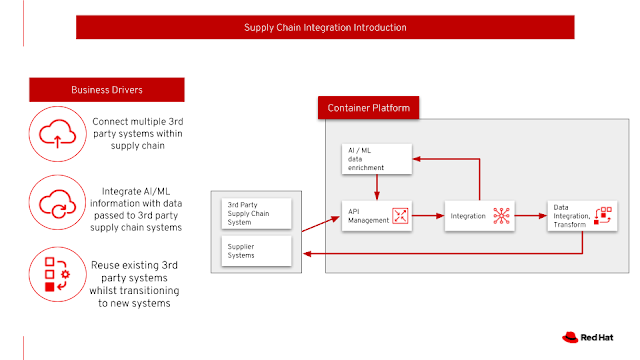
The use case is streamlining integration between different elements of a retail supply chain for on-premise, cloud, and other third-party interactions.
Additional Portfolio Architecture Solutions
If you are interested in more architecture solutions like these, feel free to export the Portfolio Architecture Examples repository. More architecture collections include:
Published at DZone with permission of Eric D. Schabell, DZone MVB. See the original article here.
Opinions expressed by DZone contributors are their own.

Comments